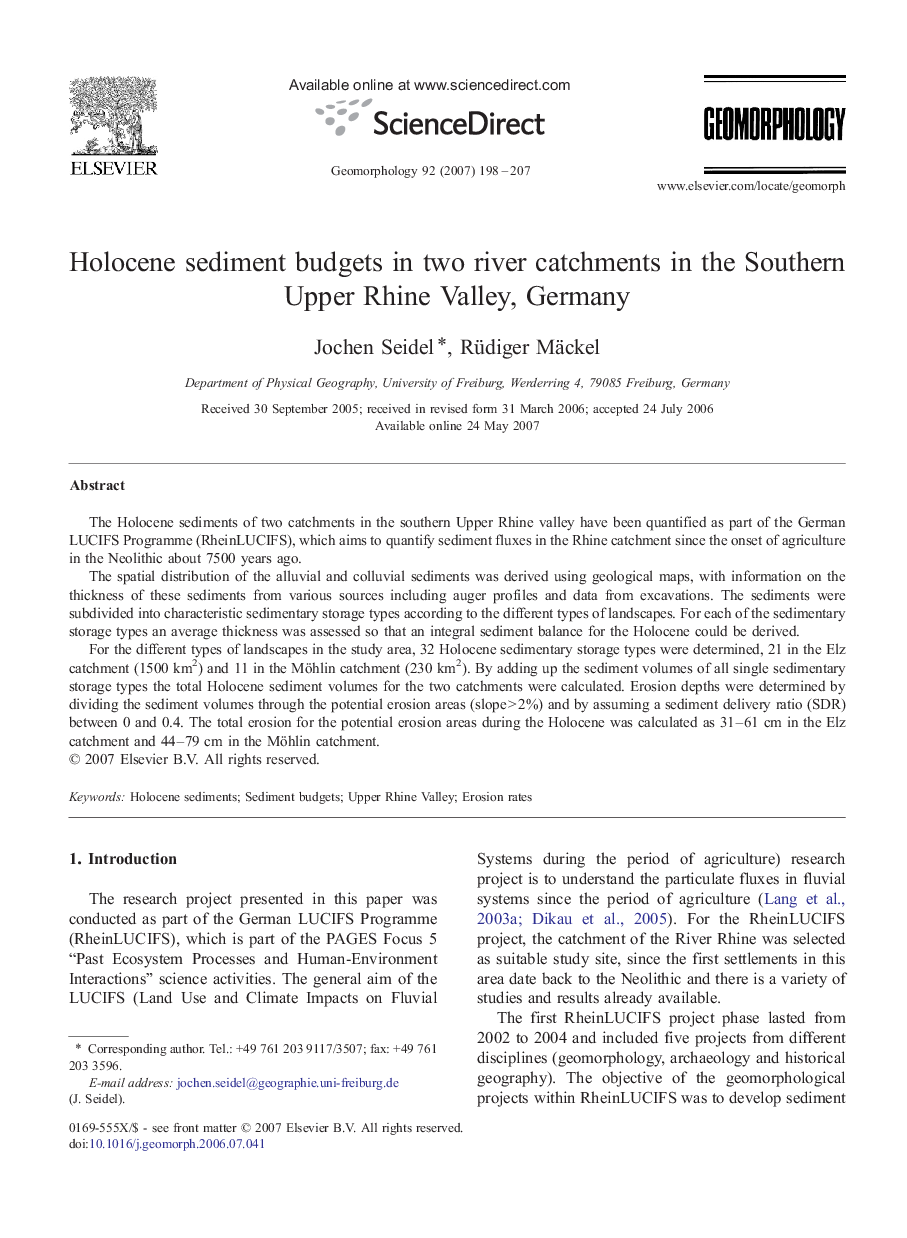| Article ID | Journal | Published Year | Pages | File Type |
|---|---|---|---|---|
| 4687024 | Geomorphology | 2007 | 10 Pages |
The Holocene sediments of two catchments in the southern Upper Rhine valley have been quantified as part of the German LUCIFS Programme (RheinLUCIFS), which aims to quantify sediment fluxes in the Rhine catchment since the onset of agriculture in the Neolithic about 7500 years ago.The spatial distribution of the alluvial and colluvial sediments was derived using geological maps, with information on the thickness of these sediments from various sources including auger profiles and data from excavations. The sediments were subdivided into characteristic sedimentary storage types according to the different types of landscapes. For each of the sedimentary storage types an average thickness was assessed so that an integral sediment balance for the Holocene could be derived.For the different types of landscapes in the study area, 32 Holocene sedimentary storage types were determined, 21 in the Elz catchment (1500 km2) and 11 in the Möhlin catchment (230 km2). By adding up the sediment volumes of all single sedimentary storage types the total Holocene sediment volumes for the two catchments were calculated. Erosion depths were determined by dividing the sediment volumes through the potential erosion areas (slope > 2%) and by assuming a sediment delivery ratio (SDR) between 0 and 0.4. The total erosion for the potential erosion areas during the Holocene was calculated as 31–61 cm in the Elz catchment and 44–79 cm in the Möhlin catchment.
